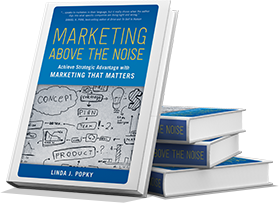Why the Storm of Protests Matters to Marketers
Author: Linda J. Popky
It seemingly came out of nowhere – a few disgruntled young people gathered in lower Manhattan to protest the financial industry, the recent bailouts, and the greed of Wall Street institutions.
Before you knew it, the movement caught steam, with adherents from across generations and demographic groups and copycat groups in many American cities.
Whether or not major change comes from these demonstrations, the discontent and unhappiness at the heart of the Occupy movement offer a critical lesson for marketers.
The sentiment behind the Occupy movement should come as no surprise: Americans are frustrated, fed-up, and short-tempered. The ongoing recession has drained both businesses and consumers. Tens of thousands of people have lost their homes or their jobs, or have had to change their lifestyles or put off retirement. The country’s politicians appear hopelessly deadlocked along party lines, more concerned about beating the other party in order to appeal to their own side’s special interests than engaging in constructive dialogue to get things done. A generation of kids is coming of age without any clear path to self-sufficiency – in terms of education, job prospects, or the ability to start their own households.
Is this the American version of an Arab spring? Highly unlikely. We have no totalitarian regime to overthrow. Is it the first sign of a new kind of class warfare? Probably not. The protesters cross class, race and economic lines. Can a movement with no leaders and no clearly defined demands or objectives even accomplish anything? Too soon to tell. But the discontent is brewing and churning with little sign of abatement.
How we got here will likely be debated for years to come. There’s plenty of blame to go around. Big banks should have known better than to offer subprime mortgages that were ticking time bombs. The people who accepted this money should have known better than to sign up for financial commitments they had little chance of meeting. Regulators should have known better than to let the process play out without concern for the repercussions when the bubble burst. And so on, and so on.
But now that we’re here, the lessons for business are clear:
- Don’t take a captive audience for granted. Consumers may buy your products and services today, even at a high price, but you may reap the consequences later on. Offer good value at a fair price, even when you have the opportunity to gather windfall profits. Especially when you have the opportunity for windfall profits.
- Information has never flowed as free or as fast. It’s virtually impossible to keep much of anything a secret today. And since we carry our communications devices with us in our pockets, we find out about everything as it happens. When something newsworthy happens to your organization, count on everyone – employees, customers, suppliers, stockholders – finding out about it instantly. Your crisis communication plan should be heavy on the communications part. If information doesn’t come from you, misinformation may come from others.
- Social media enables interactions and community at a level never seen before. We’ve seen this with situations as diverse as the revolts in Cairo and the recent death of Steve Jobs. People are connecting and sharing their thoughts, good and bad, in ways we’ve never experienced before. Not all of these interactions are appropriate places for engaging in business interactions, but often they’re a great opportunity to hear what your customers are saying, what current events resonate with them, what’s on their mind for the future. Take the opportunity to listen.
- There are two sides to the customer engagement coin. Embrace both. We love to engage with customers when they tell us good things – what they like about us and our products, how they use our services, what they want from us next. We aren’t always as forthcoming about embracing the negative side – what we’re doing wrong, when our service and support break down, how we’re angering our key constituencies. Yet it’s even more important to listen to the problems and make sure we have a plan to act on what we’ve heard, then follow through and react to the issues. The perception in America today is that the big banks and Wall Street didn’t do this when customers came to them for help with their mortgages. Whether that’s true across the board, perception is reality and the perceptions in this case are nasty.
- The media loves war, not peace. We used to say bad news sold papers; today it generates page views or downloads. The motivations are the same: Catch the wave of foment and ride it to attract attention for your publication or media property. There’s not much interest in talking about where things are going smoothly or where people are content and happy. When the media monster rears its head, either find a way to ride out the storm under the radar or develop an unusual story angle that is provocative in a positive way for your organization (e.g., how you’re part of the solution).
- Stand-up behavior allows you to stand above the crowd. Loud rhetoric aside, Americans aren’t angry at all big business. Apple is one of the biggest businesses around these days, yet the only gatherings around their stores are to buy more of the latest products. No one is picketing Target or McDonalds. Organizations that provide solid value at a reasonable price AND develop ongoing, positive relationships with their customers will continue to thrive under almost any conditions.
Don’t wait for your customers and prospects to stage Occupy You. Take this opportunity to reach out and build the relationships you need to keep customers positively engaged with you now and in the future.
Contact us for a free marketing assessment today.




